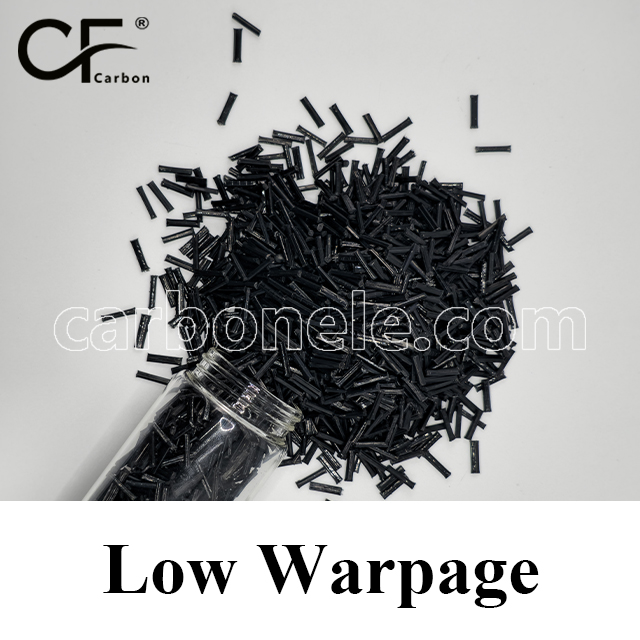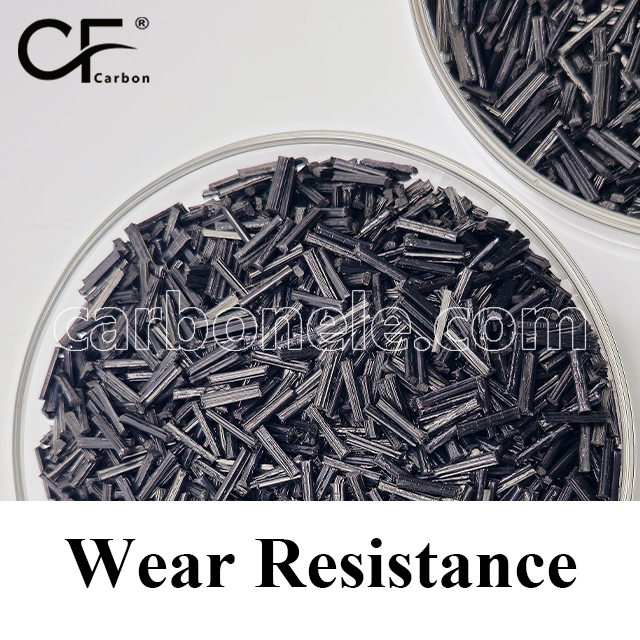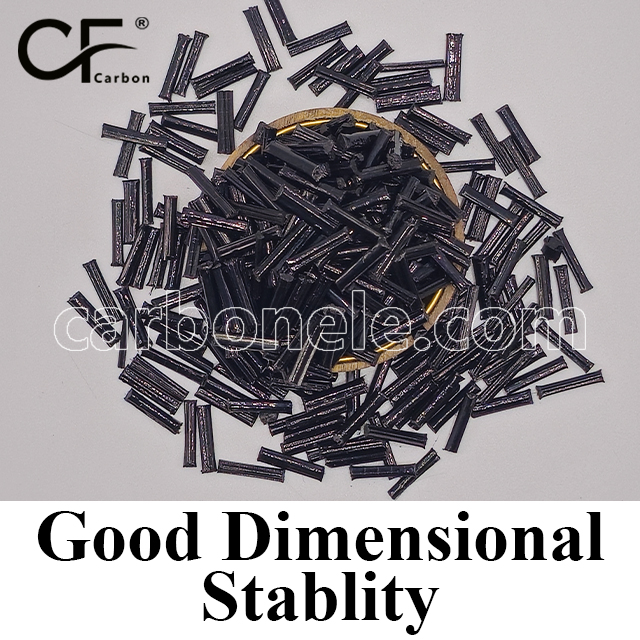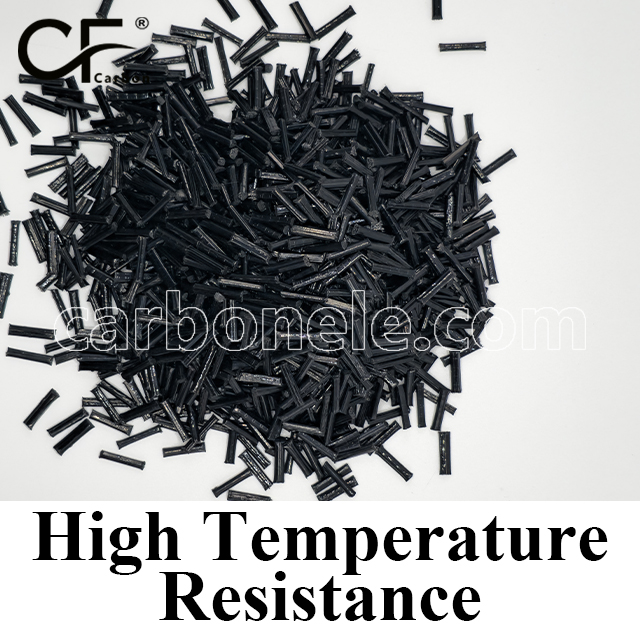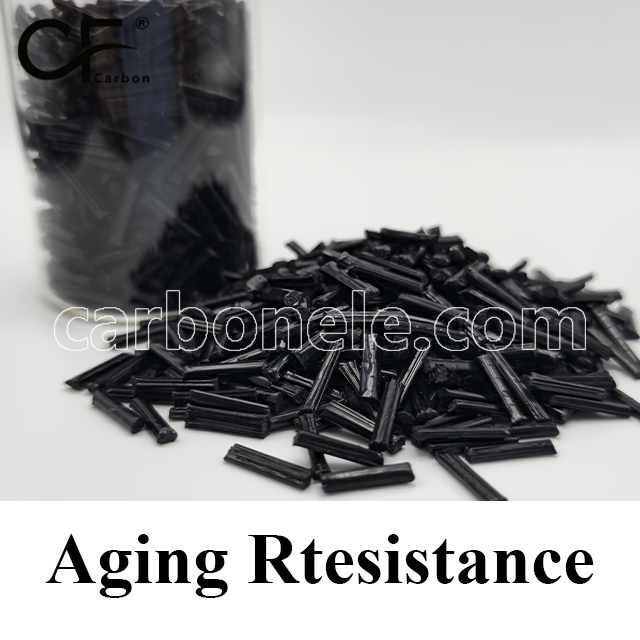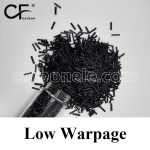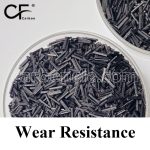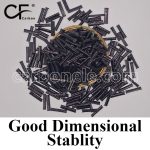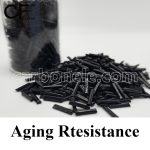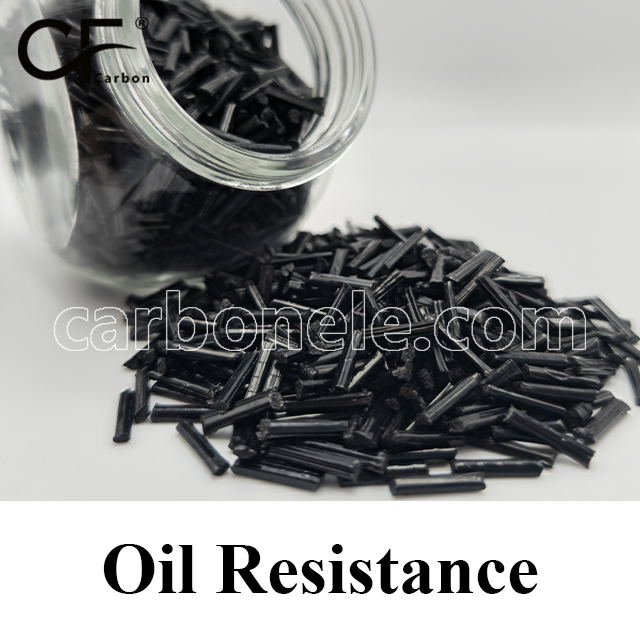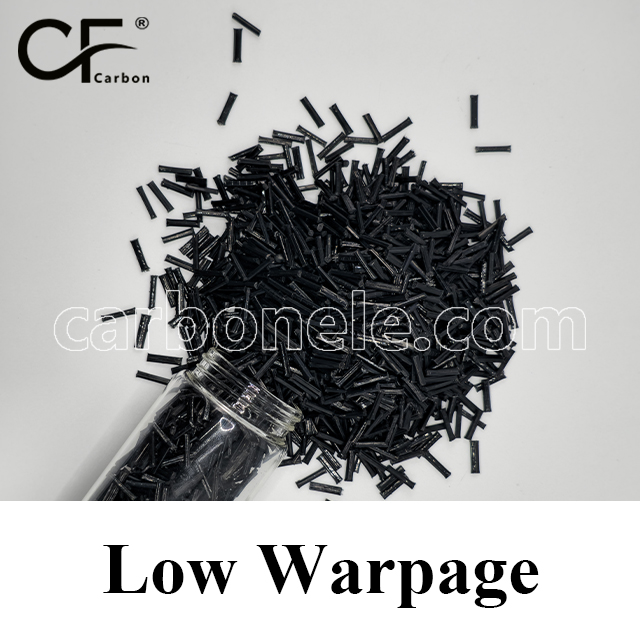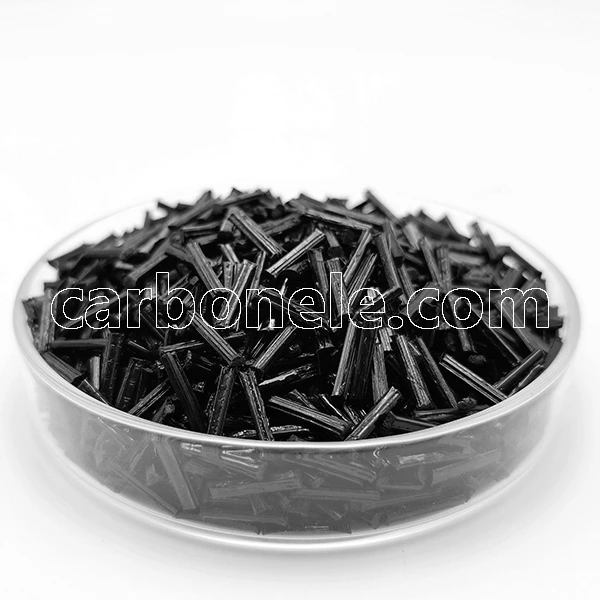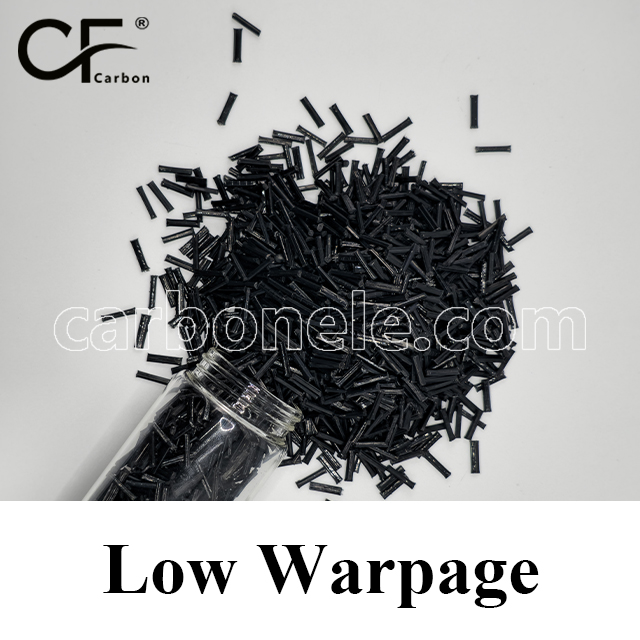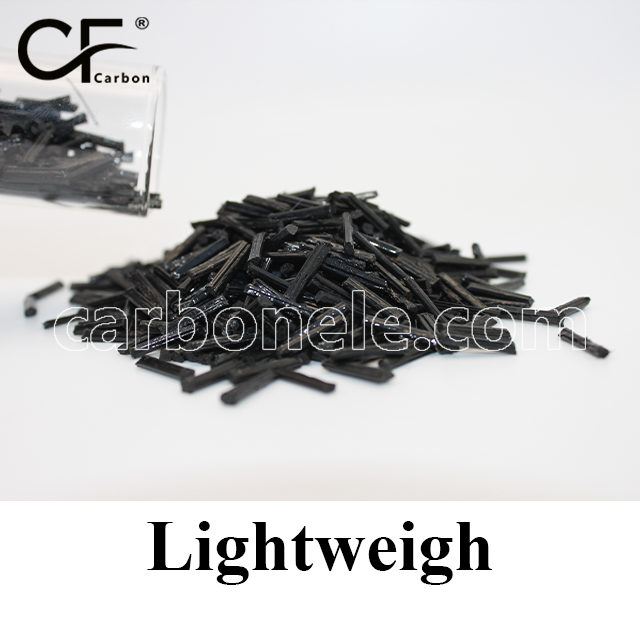PPS-LCF20 is a high-performance thermoplastic reinforced with 20% long carbon fiber, offering superior stiffness, tensile strength, and fatigue resistance compared to lower fiber grades. It maintains excellent dimensional stability, thermal resistance (up to 220 °C), and chemical durability in demanding environments, making it ideal for structural components in automotive, aerospace, and industrial applications.

Lightweight Structural Components PPS-LCF20
- Model number: PPS-LCF-BCA2
- Matrix Resin: Polyphenylene Sulfide (PPS)
- Reinforcing Filler: Carbon fiber
- Appearance: Granules
- Grade: Injection/extrusion grade
- Packaging: 25kgs/bag
PPS-LCF20 | 20% Long Carbon Fiber Reinforced Polyphenylene Sulfide
PPS-LCF20 is a high performance, semi crystalline thermoplastic composite reinforced with 20% long carbon fiber, engineered to provide significantly improved mechanical strength, stiffness, fatigue resistance, and dimensional stability over short fiber or lower LCF content grades. With increased fiber loading, it offers superior performance in structural, high load, and high temperature applications, while maintaining the hallmark chemical and thermal resilience of PPS.
The long fiber reinforcement enhances load transfer and crack resistance, making PPS-LCF20 ideal for applications that experience vibration, cyclic loading, or mechanical fatigue in aggressive thermal and chemical environments.
Core Performance Highlights
Mechanical Properties
Carbon Fiber Content: 20% (long chopped fibers, partially oriented during molding)
Tensile Strength: ≥ 140–150 MPa
Flexural Modulus: ~11–12 GPa
Elongation at Break: ~1.0–1.5%
Notched Izod Impact: ~55–65 J/m
→ The increased long fiber content delivers higher stiffness and strength, while retaining better fatigue resistance and fracture toughness than equivalent short fiber composites.
Thermal Resistance
Heat Deflection Temperature (HDT): ≥ 250 °C
Continuous Use Temperature: Up to 220 °C
→ Provides reliable mechanical integrity under sustained heat exposure, including thermal cycling, with minimal distortion or creep.
Environmental & Chemical Durability
Moisture Absorption: <0.03% — extremely low, ensuring part precision
Chemical Resistance: Excellent — highly resistant to acids, fuels, oils, bases, and solvents
→ Withstands corrosive fluids, humidity, and immersion environments while maintaining mechanical and dimensional stability.
Processing & Manufacturing
Molding Methods: Long fiber injection molding (LFT-G), compression molding
Surface Finish: Matte to fiber textured; slight fiber visibility likely
Tooling Requirements: Requires hardened, abrasion resistant tooling due to increased fiber content
→ Processing PPS-LCF20 may require controlled molding conditions to preserve fiber length and ensure optimal mechanical performance. Longer fibers increase tool wear but significantly enhance part strength.
Target Applications
Automotive & Mobility
Under-hood brackets, engine mounts, structural HVAC housings
→ Offers metal like strength and thermal durability for components exposed to fuels, oils, and vibration.
Aerospace & Defense
Load-bearing clips, brackets, structural shields
→ Lightweight replacement for aluminum components requiring stiffness, fatigue resistance, and thermal stability.
Industrial & Mechanical Equipment
Precision pump parts, mechanical couplings, gear housings
→ Maintains geometry under load, vibration, and chemical exposure in industrial and process equipment.
Electronics & Electrical Systems
Structural PCB carriers, high temp electrical enclosures, EMI/RFI shields
→ Provides dimensional stability, thermal resistance, and mechanical protection in high performance electrical systems.
Performance Summary Table
| Property | Value / Description |
|---|---|
| Carbon Fiber Content | 20% (Long Carbon Fiber Reinforced) |
| Tensile Strength | ≥ 140–150 MPa |
| Flexural Modulus | ~11–12 GPa |
| Elongation at Break | ~1.0–1.5% |
| Notched Izod Impact | ~55–65 J/m |
| Heat Deflection Temp. | ≥ 250 °C |
| Long Term Service Temp. | Up to 220 °C |
| Moisture Absorption | <0.03% — highly dimensionally stable |
| Chemical Resistance | Excellent — fuels, oils, acids, bases, solvents |
| Wear Resistance | Very good — enhanced by long fiber structure |
| Processing Methods | Long fiber injection molding (LFT), compression molding |
| Surface Finish | Matte/textured — visible fiber pattern possible |
| Dimensional Stability | High — excellent creep, fatigue, and warpage resistance |
If you want to get more information about PPS-LCF20, you can visit our Youtube.
Friction coefficient of PPS-CF
The friction coefficient of PPS (Polyphenylene Sulfide) typically ranges from 0.3 to 0.45, while PPS-CF (Carbon Fiber Reinforced Polyphenylene Sulfide) has a lower coefficient, generally between 0.2 and 0.35. The addition of carbon fiber improves hardness, wear resistance, and reduces friction, making PPS-CF more suitable for high-load, high-temperature, and high-friction applications.

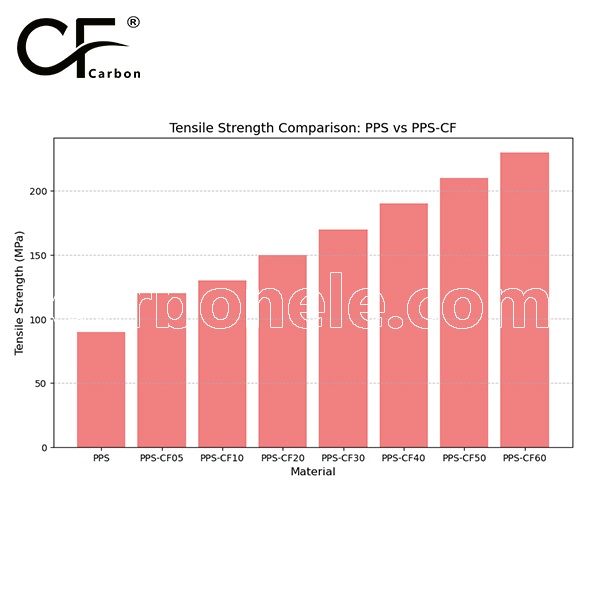

Frequently Asked Questions
Carbon (Xiamen) New Material Co., Ltd. aims to provide buyers with "one-stop" worry-free high-quality services. Here you can find all information about carbon fiber engineering plastics. If you still have questions, please send us an email for consultation!
-
How can I contact the manufacturer of a product that interests me?
When you find a product you are interested in, you can contact the manufacturer directly by sending an email and we will get back to you as soon as possible.
-
How do I find the products that interest me?
All you need to do is enter the keyword, product name in the search window and press the Enter key on your keyboard. Your search results page will then be displayed. You can also search within the product category pages on the home page. Each category is divided into subcategories, allowing you to refine your search and find products that interest you.
-
Where will I find a buying guide?
Please contact our after-sales service directly and we will provide you with a comprehensive operating guide.
-
What are CF Reinforced Thermoplastic Composites?
CF Reinforced Thermoplastic Composites are materials where carbon fibers are incorporated into a thermoplastic matrix. They combine the strength and stiffness of carbon fibers with the processability and recyclability of thermoplastics. For instance, they are used in automotive parts like bumper beams.
-
What are the benefits of CF Reinforced Thermoplastic Composites over traditional composites?
The key benefits include faster production cycles, easier recyclability, and better impact resistance. They also offer design flexibility. An example is in the manufacturing of consumer electronics casings where complex shapes can be achieved more easily.
-
How are CF Reinforced Thermoplastic Composites processed?
Common processing methods include injection molding, extrusion, and compression molding. Injection molding is widely used for mass production. For example, in the production of small components for the medical industry.
-
What industries use CF Reinforced Thermoplastic Composites?
They are utilized in aerospace, automotive, medical, and sports equipment industries. In aerospace, they can be found in interior components. In the medical field, they might be used in prosthetics.
-
How does the carbon fiber content affect the properties of the composites?
Higher carbon fiber content generally leads to increased strength and stiffness but may reduce ductility. A moderate content is often balanced for specific applications. For example, a higher content might be preferred in structural parts of a race car.
-
What are the challenges in using CF Reinforced Thermoplastic Composites?
Challenges include higher material costs, complex processing equipment requirements, and ensuring uniform fiber dispersion. Issues with adhesion between the fibers and the matrix can also arise. An example is in achieving consistent quality in large-scale production.







